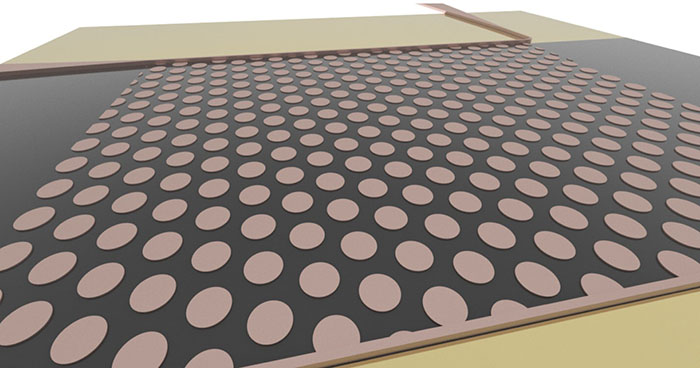Magnonic Crystals: Harnessing Spin Waves for Information Processing
What are Magnonic Crystals?
Magnonic crystals are artificial periodic structures designed to control and manipulate the propagation of spin waves, also known as magnons. These crystals are the magnetic analogs of photonic crystals, which control the flow of light. By engineering the geometry, composition, and arrangement of magnetic materials at the nanoscale, researchers can create magnonic crystals with unique properties and functionalities for information processing and communication applications.

Spin Waves and Magnons
To understand magnonic crystals, it is essential to first grasp the concepts of spin waves and magnons:
- Spin Waves: In magnetic materials, the magnetic moments of atoms can oscillate collectively, creating wave-like excitations called spin waves. These waves propagate through the material, carrying energy and information without the movement of electrons or atoms.
- Magnons: Magnons are the quasiparticles associated with spin waves, representing the quantized excitations of the spin wave modes. They are the magnetic analogs of photons in light waves and phonons in sound waves.
By designing magnonic crystals with specific periodicities and material properties, researchers can control the dispersion relation, group velocity, and propagation direction of spin waves, enabling the manipulation and processing of information carried by magnons.
Magnonic Band Structure
One of the key features of magnonic crystals is their band structure, which describes the allowed and forbidden energy states for spin waves. The periodic arrangement of magnetic materials in magnonic crystals leads to the formation of magnonic band gaps, similar to the electronic band gaps in semiconductors or the photonic band gaps in photonic crystals.
The magnonic band structure depends on several factors, including:
- The geometry and dimensions of the magnonic crystal
- The magnetic properties of the constituent materials, such as saturation magnetization and anisotropy
- The external magnetic field applied to the crystal
- The orientation of the spin waves relative to the crystal lattice
By engineering the magnonic band structure, researchers can control the propagation, confinement, and filtering of spin waves in magnonic crystals, enabling the realization of novel magnonic devices and functionalities.
Fabrication of Magnonic Crystals
The fabrication of magnonic crystals requires precise control over the nanoscale structure and composition of magnetic materials. Some common fabrication techniques include:
Lithography
Lithographic techniques, such as electron beam lithography or nanoimprint lithography, can be used to pattern magnetic materials into periodic structures with nanoscale features. These techniques allow for the creation of complex geometries and the incorporation of multiple magnetic materials within a single magnonic crystal.
Self-Assembly
Self-assembly methods, such as block copolymer lithography or colloidal assembly, can be employed to create magnonic crystals with ordered nanostructures. These techniques rely on the spontaneous organization of nanoscale building blocks, such as magnetic nanoparticles, into periodic arrays.
Thin Film Deposition
Thin film deposition techniques, such as sputtering, molecular beam epitaxy, or pulsed laser deposition, can be used to grow multilayered magnonic crystals with alternating magnetic and non-magnetic layers. By controlling the thickness and composition of each layer, researchers can engineer the magnonic band structure and spin wave properties.
Applications of Magnonic Crystals
Magnonic crystals have diverse applications in information processing, communication, and sensing. Some of the key applications include:
Spin Wave Logic Devices
Magnonic crystals can be used to realize spin wave-based logic devices, where information is processed and transported using spin waves instead of electric currents. By exploiting the nonlinearity and interference of spin waves, researchers can design magnonic logic gates, such as AND, OR, and NOT gates, enabling low-power and high-speed computing.
Microwave Filters and Sensors
The frequency-selective properties of magnonic crystals make them suitable for microwave filtering and sensing applications. By designing magnonic crystals with specific band gaps and resonances, researchers can create highly sensitive and tunable microwave filters and sensors for wireless communication and biomedical applications.
Magnonic Waveguides and Interconnects
Magnonic crystals can be used to guide and route spin waves in integrated magnonic circuits. By engineering the geometry and composition of magnonic waveguides, researchers can achieve low-loss and high-bandwidth interconnects for information transfer between different components of a magnonic system.
Future Perspectives and Challenges
Magnonic crystals offer exciting opportunities for the development of novel information processing and communication technologies based on spin waves. However, several challenges need to be addressed for the practical realization of magnonic devices:
- Scaling down magnonic crystals to nanoscale dimensions while maintaining their desired properties and functionalities
- Developing efficient methods for the excitation, detection, and manipulation of spin waves in magnonic crystals
- Integrating magnonic crystals with other technologies, such as CMOS electronics or photonic devices, for hybrid information processing systems
- Improving the thermal stability and reducing the energy dissipation of magnonic crystals for low-power applications
As research in magnonic crystals continues to advance, it is expected that these challenges will be addressed, paving the way for the development of practical magnonic devices and systems for next-generation information processing and communication technologies.
Further Reading
Advanced Materials, Magnonics: Spin Waves on the Nanoscale
Journal of Physics D: Applied Physics, Magnonic crystals for data processing
Journal of Physics: Condensed Matter, Review and prospects of magnonic crystals and devices with reprogrammable band structure
